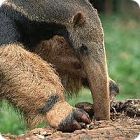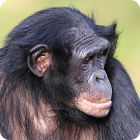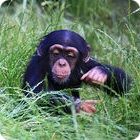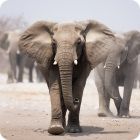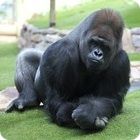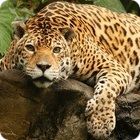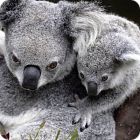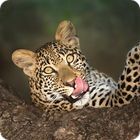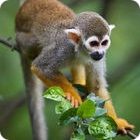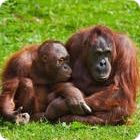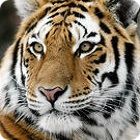Jungle Animals
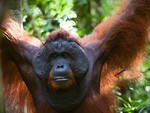
Jungle animals include some of the worlds largest and most unusual creatures, but just what is a jungle? And what is the difference between a forest, a rain forest and a jungle?
The word "forest" basically means an area with a large density of trees. Forests can occur in low or high elevation, can be relatively dry or very rainy, and can be of basically any temperature that still supports tree growth.
A mature forest is one that may have very large trees and
many species of plants and wildlife such as tropical rain forests, or
may be limited in the number of species of both trees and wildlife, such
as is the case with the coniferous forests found in the very cold taiga regions
of the world.
The term "rain forest" refers to a forest that receives a minimum of about 60 inches of total rainfall a year. There are two types of rainforests, temperate rainforests with moderate temperatures and even some snowfall, or tropical rainforests which occur close to the equator and rarely dip below 60 degrees.
Rain forests are characterized by having such a thick upper canopy of growth, that little sunlight reaches the ground. This means that young trees must be able to grow with limited sunlight, and it also means that the undergrowth in a rain forest is not particularly dense. It is generally easier to walk through a rain forest than a jungle.
The jungle is an area of forest that combines warmer temperatures and dense vegetation. The tree canopy is not as thick in a jungle as it is in a rain forest, allowing sunlight to reach more of the ground.
Vines, shrubs, grasses and moss thrive in the lower third of a jungle making it very difficult to penetrate on foot. Jungles, then, are simply warm forests that are very densely vegetated at the forest floor. And here are some of the jungle animals that live there- Jungle Animals
Is the lion the king of the jungle?
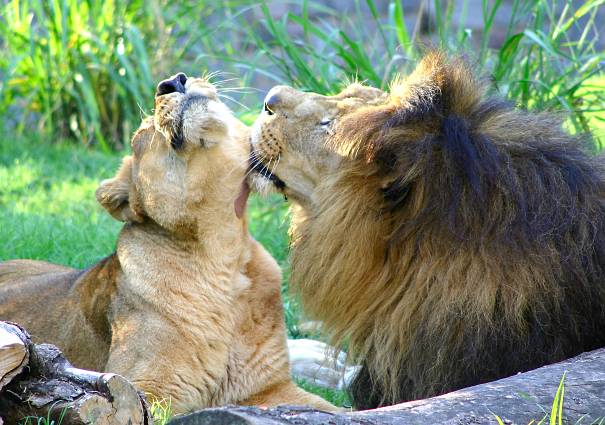
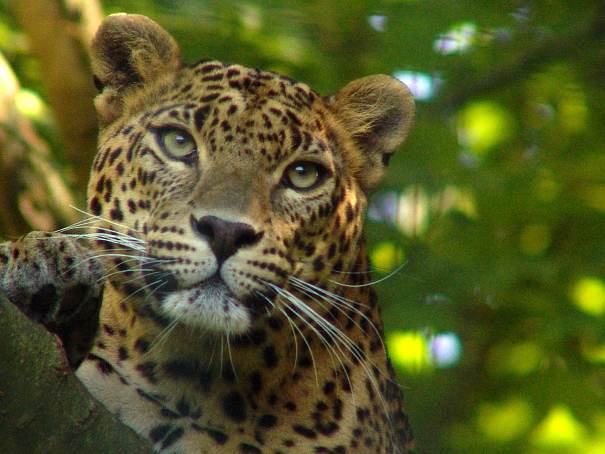
The African lion is not a jungle animal. In fact, of the 20,000 lions that still live in the wild, only 250-300 highly endangered Asiatic lions live in the Gir jungle of India. These lions are smaller than the familiar African lion which lives ion the savanna grasslands.
A number of other big cats call the jungle their home though. Bengal tigers, leopards and jaguars all live in the jungles of three different continents and are the apex predators in those environments. The most notorious jungle animal of all these cats, the leopard, is serenely at home in the trees, and although it too calls some dusty environments home, the jungle is where the leopard really shines.
Stealthy, quiet, incredibly powerful, the leopard can hunt in the trees and is agile enough to pursue monkeys and other arboreal creatures high above the jungle floor. The leopard is also adept at lying in wait on a tree branch and then dropping silently down on unsuspecting jungle inhabitants such as goats and antelope.
The leopard is most well known though, for its somewhat gruesome habit of hanging its prey from the limbs of trees. It does this to protect it from scavengers, and will return to large kills several times to eat on the same tree branch, safe and comfortable beneath its green jungle canopy.
Uneasy is the jungle visitor who
comes upon the carcass of a wild boar hanging in a tree. It only serves
as evidence that the true "King of the Jungle" lurks nearby....Jungle
Animals Facts
The Great Apes
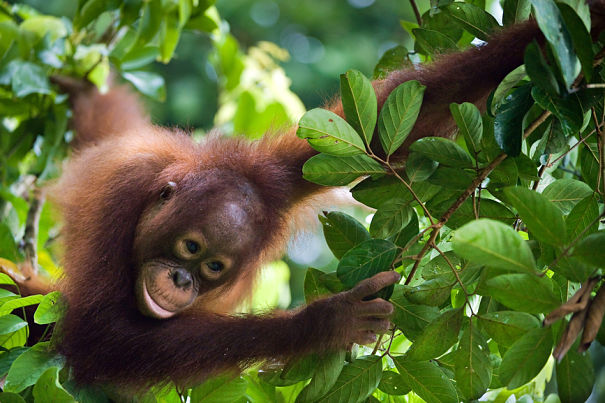
All of the non-human great apes are native to African jungles except the orangutan which is native to jungles in Borneo and Sumatra. The chimpanzee and the Eastern lowland gorilla live in the least heavily forested areas, and chimps can be found ranging into savanna regions as well. Eastern mountain, and Western gorillas all live in the jungles of central Africa.
The orangutan lives in jungles and rain forests in Borneo and Sumatra and is the largest arboreal animal in the world. The trees are vital to their existence. They are all harshly impacted by farming and deforestation and, tragically, all the great apes are endangered species except human beings.
The non-human great apes are some of the few animals, along with whales and elephants, that display an understanding of self similar to our own, and they are our closest living relatives.

Forest elephants
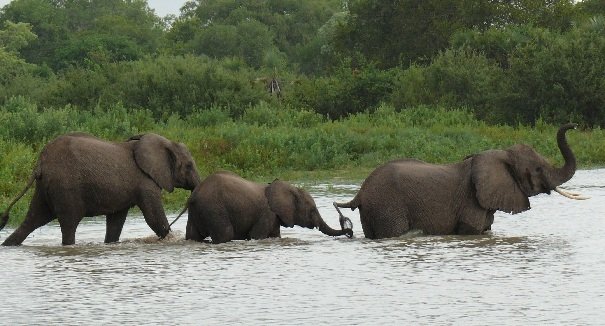
Only recently, in the year 2010, was the forest elephant recognized as a separate species of African elephant. The more common African bush elephant roams the dusty savanna, but the forest elephant lives in remarkably dense brush of the African jungle.
About 30% smaller than the typical African elephant, forest elephants rarely reach 8 feet at the shoulder but still must squeeze tight through thick underbrush on the jungle borders of the savanna. They live in smaller groups than their larger brush elephant cousins and have a different, more varied diet due to the richness of their jungle environment.
The forest elephant is vital to the development of the shrubs and trees in the jungle as they spend most of their days, distributing seeds while they forage for fruits. It is believed that they are the main distributor of seeds for several fruit species, and that without an active and healthy forest elephant population, conservationists believe there would be a huge impact on the environments they live in. In the typical circle of life, their dung also serves as healthy fertilizer for the jungle they call home. Forest elephants are elusive and have not been studied or photographed to anywhere near the extent that the bush elephants of the African plains have been. Much of their lives remains a mystery - Jungle Animals
a few more Jungle Animal facts
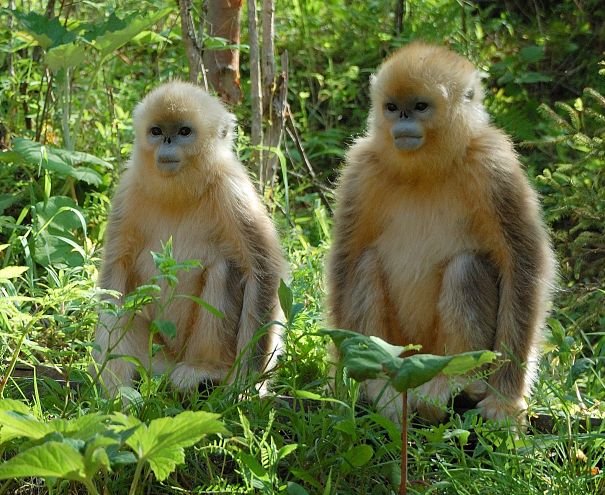
- Although some say there are no jungles in Australia, this may be a case of semantics with the word "bush" substituted for jungle, no matter, the edges of Australian rainforests, particularly along waterways would be considered a jungle environment in most cultures .
- All the great apes except human beings are native jungle animals.
- The majority of lions, also known as the "King of the Jungle" actually live in the savanna.
- The jungle is a forest environment that has undergrowth so dense that it is hard to penetrate without cutting through it.
- The word "jungle" is often used as a metaphor for any place that is unruly. - Jungle Animals
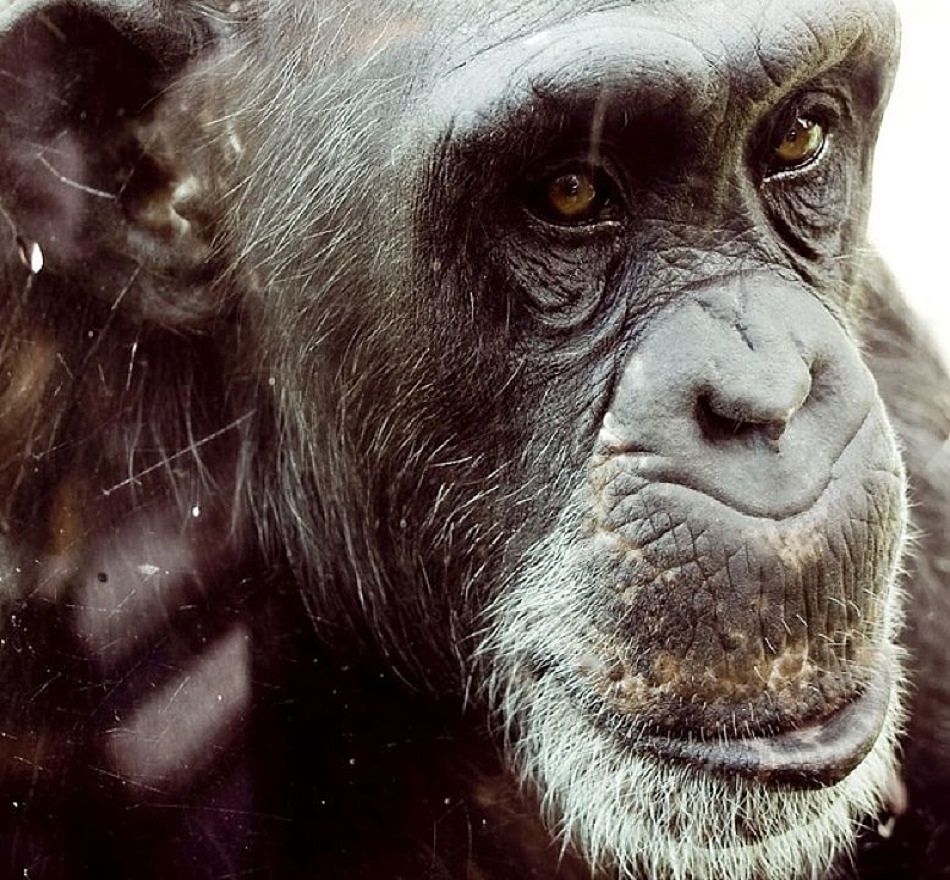
Recent Articles
-
African Animals - Animal Facts Encyclopedia
Oct 11, 16 10:27 PM
African Animals facts photos and videos..Africa is a wonderland for animal lovers, and a schoolroom for anyone who wants to learn about nature, beauty and the rhythm of life -
Baboon Facts - Animal Facts Encyclopedia
Oct 11, 16 10:26 PM
Baboon facts, photos, videos and information - Baboons are very distinctive looking monkeys with long, dog-like snouts and close set eyes. -
Great Apes Facts - Animal Facts Encyclopedia
Oct 11, 16 10:25 PM
Great apes facts, photos and videos..Human beings did not evolve from chimpanzees, modern chimps and gorillas do not appear in the fossil records until much more recently than homo sapiens..
